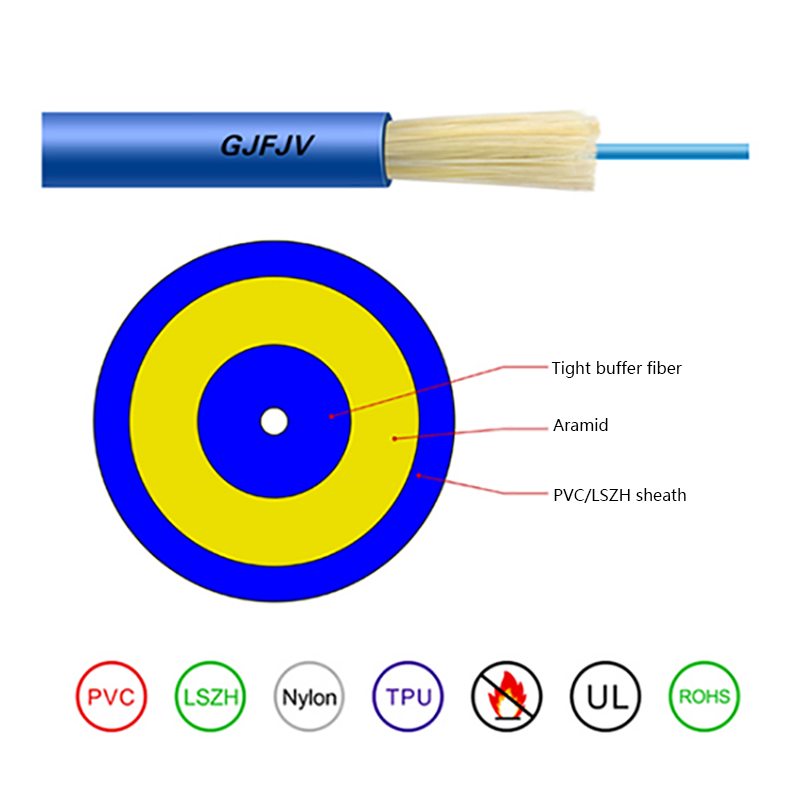How do you ensure the proper protection of outdoor optical cables from rodents and other environmental threats?
In today's rapidly advancing technological landscape, the need for reliable, uninterrupted connectivity has never been more critical. Optical fiber cables, with their high-speed data transmission capabilities, are at the heart of this infrastructure. However, when deployed in outdoor environments, these cables face numerous challenges—from harsh weather conditions to the persistent threat posed by rodents. Ensuring their protection is paramount for maintaining the integrity of communication networks and preventing costly repairs or service disruptions.
Rodent Threat: A Growing Concern
One of the most insidious threats to outdoor optical cables comes from rodents, particularly in areas where natural environments intersect with human-built infrastructure. Rodents, such as squirrels, rats, and mice, have an innate urge to gnaw on materials, and optical fiber cables—often sheathed in a plastic or polymer coating—are no exception. They may not only damage the cables, rendering them inoperable, but can also expose critical inner components to the elements, leading to corrosion, signal loss, or complete failure.
To safeguard against this, manufacturers and engineers have developed specialized cable sheathing materials infused with deterrents that make the cables unattractive to rodents. These materials may incorporate certain chemical compounds or textures that are unpleasant or harmful to these creatures, effectively reducing the risk of damage. Additionally, cables designed for outdoor use can be reinforced with steel armoring or other robust materials, creating an impenetrable barrier that makes it far more difficult for rodents to penetrate.
Environmental Hazards: Weathering the Storm
Aside from biological threats, optical cables in outdoor settings must contend with environmental hazards, such as extreme temperatures, moisture, UV radiation, and even physical abrasion. Over time, prolonged exposure to these elements can degrade the cable’s outer layers, leading to compromised functionality and diminished performance.
To combat this, modern outdoor optical cables are constructed with high-quality, weather-resistant coatings that provide a first line of defense against the elements. These coatings are designed to be UV-resistant, ensuring that the cables do not succumb to the destructive effects of sun exposure. Furthermore, moisture resistance is critical, as water infiltration can cause short circuits or rust in metal components, impairing signal transmission. Some cables are designed with a gel-filled core or water-blocking tapes that effectively prevent water from entering, even in the most humid or rainy conditions.

Physical Protection: Buried or Elevated Solutions
For those installations where cables are buried underground, additional protection methods must be considered. A common solution is the use of protective conduit systems. These conduits, often made of high-strength materials such as PVC or metal, provide an extra layer of shielding that prevents physical damage from both rodents and external forces. Not only do these conduits protect against the gnawing habits of rodents, but they also shield the cables from accidental cuts, punctures, or crushing that could occur during excavation or due to the weight of heavy machinery.
Alternatively, overhead cable installations in areas with high rodent activity or adverse weather conditions may benefit from protective casings or armor that secures the cables while elevating them off the ground. These systems reduce the likelihood of rodents gaining access to the cables and also mitigate the risks associated with physical contact with the ground, such as soil-related degradation or flooding.
Monitoring and Maintenance: Proactive Protection
Even with all these preventive measures in place, regular monitoring and maintenance of optical cables are essential to ensure continued protection. Implementing a robust inspection routine allows for the early identification of potential threats, whether they come from rodent activity, weather damage, or other environmental factors. Modern monitoring tools, such as fiber optic sensors embedded in the cables themselves, can alert technicians to any disruptions in signal strength, enabling prompt repairs before more serious damage occurs.
Additionally, routine maintenance, including the periodic replacement of worn-out or damaged protective coatings, is crucial for extending the lifespan of optical cables. Routine inspections also help identify and address any physical obstructions, such as trees or rocks, that might jeopardize the integrity of the installation.
Protecting outdoor optical cables from rodents and other environmental threats requires a multifaceted approach that combines innovative materials, physical barriers, and regular monitoring. Whether through the use of rodent-resistant sheathing, weatherproof coatings, or protective conduits, it is essential to ensure that these critical components of the communication infrastructure remain intact and functional. By employing these strategies, you not only ensure the longevity of your cables but also help safeguard the continuity and reliability of the services they support.



 English
English русский
русский Español
Español عربى
عربى 中文简体
中文简体



















